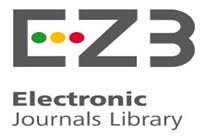IJSEA Archive (Volume 5, Issue 2)
International Journal of Science and Engineering Applications (IJSEA) (Volume 5, Issue 2 March-April 2016)
Phytochemical Studies on Linum Usitatissimum Seeds and the Nanoformulation of the Bioactive Butanol Extract
Fatma Mohamed El-Feky ,Ibrahim M. El-Sherbiny,Manal Gmal El-Fedawy,Mamdouh Abdel-Mogib
Keywords: Linum usitatissimum; Linaceae; Flax; 8-5’ neolignan; pluronic nano-micelles; controlled release.
The phytochemical investigation of Linum usitatissimum, family Linaceae, resulted in the separation and identification of a lignane, 8–5' neolignan 1 (dehydrodiconiferyl alcohol-4-β-D-glucoside), in addition to identification of many compounds by the GC/MS technique. The antimicrobial activities of hexane, methylene chloride and butanol fractions were comparable to ampicillin. The activities against E. coli were 29.2%, 37.5%, and 66.7%, respectively; against S. aureus were 45.4%, 36.4% and 63.6%, respectively, and against C. albicans were 26.9%, 46.1% and 73.1%, respectively. Antioxidant activity was assessed by ABTS method. It decreased in the following order: ascorbic acid > butanol fraction > methylene chloride fraction > hexane fraction. The cytotoxicity against HePG2 was found to be “moderate” for butanol and methylene chloride fractions, and “weak” for the hexane fraction. The cytotoxicity against MCF-7 was found to be “strong” for butanol fraction, and “weak” for both hexane and methylene chloride fractions. The lignane-rich subfraction, Lu 3d was incorporated into pluronic nano-micelles using nanoprecipitation technique through a modified procedure. The physicochemical characteristics of the developed Lu 3d-loaded nano-micelles such as particle size, potential and morphology were determined using DLS and HR-TEM. The average diameters of the prepared plain and Lu 3d-loaded pluronic nano-micelles were found to be 207 ± 12 and 225 ± 18 nm, respectively. The encapsulation of Lu 3d into nano-sized particles has enhanced their aqueous dissolution and consequently improved their bioavailability. Nanoformulation of Lu 3d led also to a stable colloidal dispersion with a strong green color, indicating its homogenous distribution in the aqueous medium at a significantly higher concentration than that obtained using other solvents.
[1] Oomah, B. D., Flaxseed as a functional food source. Journal of the Science of Food and Agriculture, 81, 889-894, (2001).
[2] Flax A. B. and Fu, Y. B. Genetic evidence for early flax domestication with capsular dehiscence. Genetic Resources and Crop Evolution, 58, (8), (2011).
[3] Oomah, B. D., and Mazza, G. Bioactive components of flaxseed. Occurrence and health benefits. In F. Shahidi C. T. Ho (Eds.), Phytochemicals and phytopharmaceuticals, 105–120, (2000).
[4] Susheelamma, N. S. Functional role of linseed (Linum usitatissimum) polysaccharide in steamed pudding (idli). J. Food Sci. Techn, 26, 16–20, (1989).
[5] Song, Li; Wang, Xian-Fen; Wu, Yan; He, Wen-Yi; Yao, Chun-Suo; Shi, Jian-Gong, Chemical constituents from the linseed meal. Fitoterapia, 97, 15-22, (2014).
[6] Sheng-Xiang, Q.; Zhi-Zhen, L.; Lumonadio L.; Sang, K.; John M.; Norman, R.; Lilian U. and Harry, H. Fong1, Isolation and Characterization of Flaxseed (Linum Usitatissimum) Constituents. Pharm. Biology, 37, (1), 1–7, (1999).
[7] Lucy, P.; Meagher , R.; Beecher , P.; Flanagan, l. and Betty, W., Isolation and Characterization of the Lignans, Isolariciresinol and Pinoresinol, in Flaxseed Meal. J. Agric. Food Chem, 47, (8), 3173–3180, (1999).
[8] Xiaoying, C. and Dong U., Antioxidant Activities of Six Natural Phenolics Against Lipid Oxidation Induced by Fe2+ or Ultraviolet Light. Journal of the American Oil Chemists Society, JAOCS, 75, (12), 1717-1721, (1998).
[9] Viorica-Mirela, P.; Alexandra G.; Diana-icoleta, R.; Delia, D.; Camelia, M. and Despina, B., Constantin Mateescu, Fatty acids composition and oil characteristics of linseed (Linum Usitatissimum L.) from Romania, Journal of Agroalimentary Processes and Technologies, 18, 136-140, (2012).
[10] Kreuter, J. Nanoparticles. In: Kreuter J, editor. Colloidal Drug Delivery Systems, New York: Marcel Dekker; 219–342 (1994).
[11] Vickram, B.; Ophelia, F.; Christophe, H.; Serge, P.; Eric, G.; David, L.; Dominique, C.; Frederic, L. ; Eric, L.; Jose, K., Marc-Andre, F.; François, M.; Coniferin dimerisation in lignan biosynthesis in flax cells. Phytochemistry, 68, 2744–2752, (2007).
[12] Seifert, K.; Preiss, A.; Johne, S.; Schmidt, J.; Lien. N.; Lavaud, C. and Massiot, G., Triterpenesaponins from Verbascum songaricum. Phytochemistry, 30, 3395-3400, (1991).
[13] Lissi, E.; Modak, B.; Torres, R.; Escobar, J.; Urza, A., Free Radical Res, 30, 471 – 477, (1999).
[14] Mosad, A. ; Ghareeb, H. ; Hassan, M. ; Laila, A.; Refahy, M. and Amal, M., Antioxidant and cytotoxic activities of flavonoidal compounds from Gmelinaarborea (Roxb.). Global J. Pharm, 8, (1), 87-97, (2014).
[15] Ghareeb, M. A.; Hussein A. S.; Hassan M. F, Madkour, Laila A. Refahy, Mona A. Mohamed and Amal M. Saad. Radical scavenging potential and cytotoxic activity of phenolic compounds from Tectonagrandis (Linn.). Global J. Pharm, 7, (4), 486-497, (2013).
[16] Mauceri H, Hanna N, Beckett M, Gorski D, Staba M, Stellato K, Bigelow K, Heimann R, Gately S, Dhanabal M, SoffG A, Sukhatme V, Kufe D and Weichselbaum R. Combined effects of agiostatin and ionizing radiation in antitumour therapy. Nature, 394, 287-291, (1998).
@article{Fatma05021006,
title = " Phytochemical Studies on Linum Usitatissimum Seeds and the Nanoformulation of the Bioactive Butanol Extract ",
journal = "International Journal of Science and Engineering Applications (IJSEA)",
volume = "5",
number = "2",
pages = "076 - 091",
year = "2016",
author = " Fatma Mohamed El-Feky ,Ibrahim M. El-Sherbiny,Manal Gmal El-Fedawy,Mamdouh Abdel-Mogib ",
}










